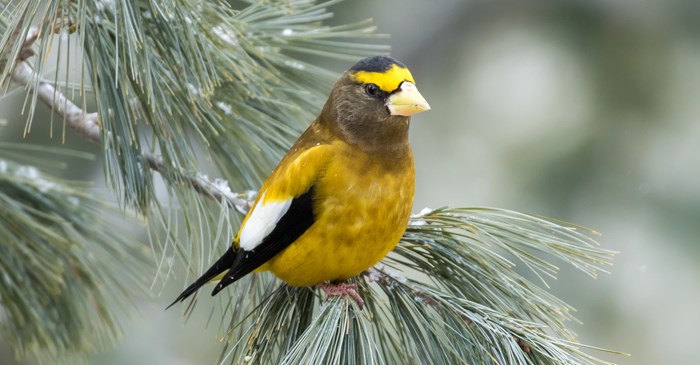Depending on where you live, if it’s winter and you suddenly find newcomers with bright gold feathers on your feeder, you just might be experiencing a flock of rare visitors: Evening Grosbeaks. Some mistake these for Goldfinches but they are larger, stockier and have large beaks that can easily crack open seeds. In fact, this ability is reflected in its scientific name — “Coccothraustes,” which means “kernel cracker.”
Males have brown heads accented with a bright yellow “eyebrow,” and black and yellow bodies. Females are grayish-brown with a pale yellow at their necks. They spend much of their time in far northern New England, Canada and in the mountains of the Western U.S., preferring pine forests. In fact, they are natives of the American West, but made their way eastward in the early 20th century, drawn to the supply of the box elder beetles there. They don't normally migrate south for the winter, but at times they will to get better access to food.
If you are hiking in the forest and through one of their regular habitats, you might hear their busy din before you see a flash of their golden plumage. Most songbirds have songs and calls in their repertoire, but Evening Grosbeaks are limited to calls. Though you might catch a rare song, they communicate to each other via high, piercing calls and chirps. If you do hear them, look up — way up. They spend their summer months in the treetops, looking for insect larvae. When the weather turns colder, they eat seeds, berries and fruit.
A visit from a flock of Evening Grosbeaks at your home feeder is a wonderful thing that happens by chance. Choose Lyric Cardinal Premium Sunflower and Safflower Wild Bird Mix to make your feeder a topnotch winter feeding spot for the Evening Grosbeak.
